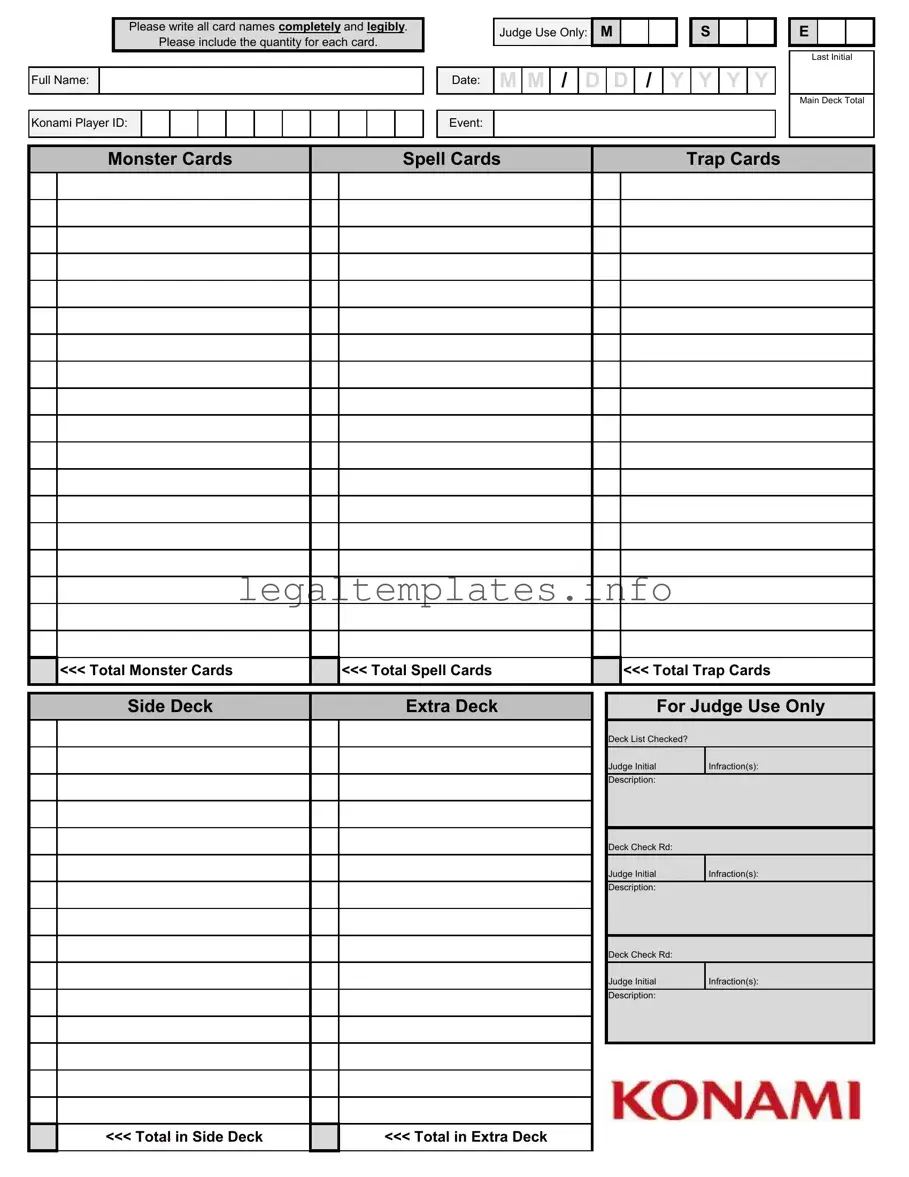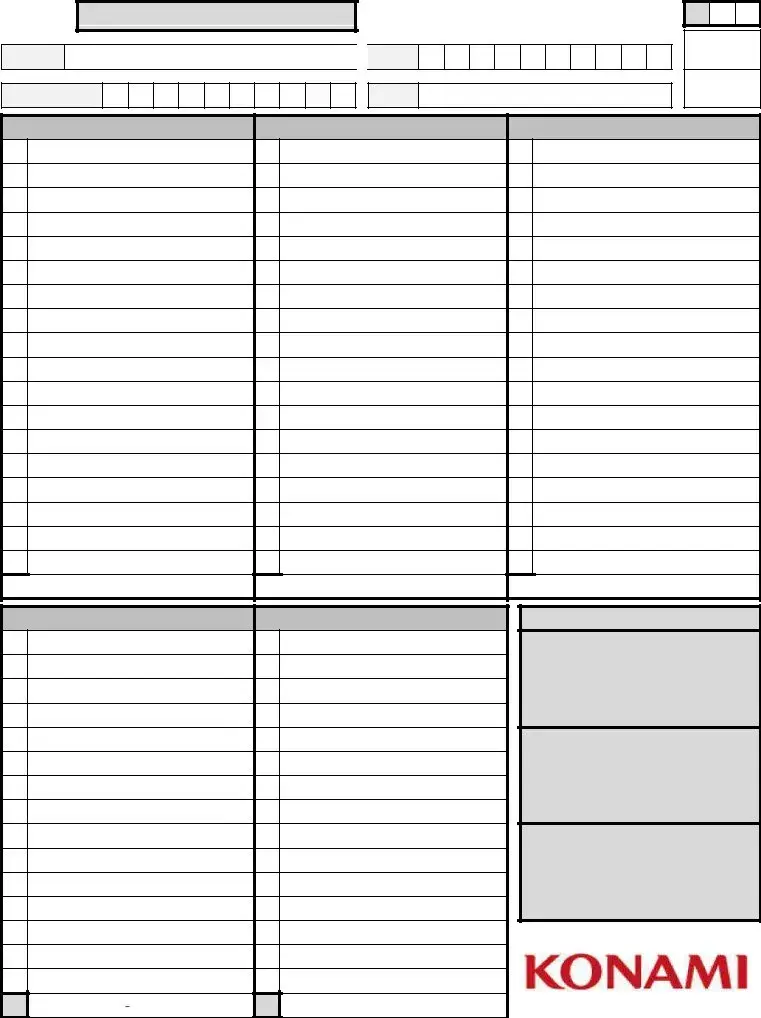Similar to the Konami Decklist form, a Library Check-Out Form is used to keep track of items being borrowed. Both forms require the user to list specifics—in the case of the library form, it's the titles of the books, their authors, and possibly the quantity if multiple copies are taken. Just as the Konami form has sections for different types of cards, the library form categorizes the materials into books, DVDs, or other items, and both forms typically include a section for the date and for official use, ensuring that items are returned or checked properly.
An Inventory Checklist shares similarities with the Konami Decklist form as it meticulously records the quantities and specifics of items in stock, which could range from products in a store to equipment in an office. The key purpose is to manage and monitor resources efficiently, providing a detailed account that includes categories much like the Decklist splits into Monster, Spell, and Trap Cards. Additionally, both forms may have a verification process by a supervisory figure to ensure accuracy and accountability.
A Race Registration Form, while used in a completely different context, has parallels to the Konami Decklist form in collecting personal details and specific categories of information. Registrants must fill out their full name and contact information, similar to filling out the player ID and name on the Decklist. Instead of deck contents, participants might list their age, gender, and the race category they're participating in, along with date and event specifics, mirroring the structure used for organizing player entries in competitive events.
The Patient Intake Form in medical settings captures detailed personal information and health history, akin to how the Konami Decklist form collects player details and deck information. Both documents are critical for the next steps in their respective procedures: treatment plans for patients, and gameplay strategy for players. Though serving vastly different purposes, they share the characteristic of categorizing information for efficient processing, with sections designated for different types of data collection.
A School Permission Slip, much like the Konami Decklist, involves guardians providing specific information about their child and granting authorization for participation in activities. Both forms are crucial for verifying participation and ensuring all parties are informed. While the Decklist form gathers details for a gaming event, the permission slip collects data for an educational activity, both utilizing signature lines and personal details for verification and record-keeping purposes.
A Sports Team Roster form, similar to the Konami Decklist, organizes player information and categorical data for team management. The roster outlines each player's name, position, and jersey number, paralleling how the Decklist details the configuration of a player's deck. This roster is critical for game preparation and strategy, much as the Decklist informs judges and opponents about a player's game plan. Both forms serve as official records that support the fair and organized execution of the game or sport.
Event Registration Forms, like the Konami Decklist form, require participants to provide personal information and preferences regarding the specific event they're entering. These forms collect data on attendee names, contact information, and sometimes preferences for workshops or sessions, much like the Decklist categorizes cards. This organization enables event planners to allocate resources and plan sessions efficiently, ensuring a smooth operation, much like the structured tournament play facilitated by the Decklist.
A Building Inspection Form, though used for structural assessments, bears resemblance in structure to the Konami Decklist form. Inspectors detail various components of a building, such as electrical systems, plumbing, and structural integrity, organizing this information into categories for a comprehensive overview. Similarly, the Decklist organizes cards into Monster, Spell, and Trap categories for a thorough assessment. Both forms are essential for ensuring standards are met, whether in gameplay fairness or building safety.
The Vehicle Rental Agreement outlines terms and conditions for the renter, requiring detailed information about the rental period, costs, and specific vehicle details, similar to how the Konami Decklist specifies deck components. Both forms are contractual and require precise, legible information entry for legal and organizational purposes, ensuring that all parties have a clear understanding of the agreement, whether it pertains to a car rental or participation in a card game tournament.
An Asset Transfer Form, used for transferring assets from one party to another, delineates specifics about the items being transferred, including type, quantity, and condition, echoing the detailed listing on the Konami Decklist form. Both documents facilitate a smooth transition of ownership or control, whether for tangible assets or competitive game elements. They ensure clarity and adherence to agreed terms, maintaining order and accountability in transactions and competitive play.




 <<< Total Monster Cards
<<< Total Monster Cards <<< Total Spell Cards
<<< Total Spell Cards <<< Total Trap Cards
<<< Total Trap Cards